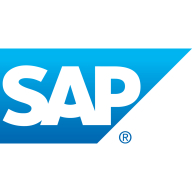


Find out what your peers are saying about Microsoft, Oracle, SAP and others in Relational Databases Tools.
We do not feel we're getting value for the investment due to the additional resources needed for integration and maintenance.
All applications need our repository to provide services for our online business or our customers, so the return is good.
The community support is better than the official SAP support.
While issues are resolved eventually, the first level of support is not as good as we would like.
When we raise a ticket for AWS or Azure issues, we find their support is very proactive, while SAP's support is quite passive.
Customer support is very good, rated eight out of ten under our essential agreement.
The technical support from Teradata is quite advanced.
Our operations have grown from a hundred data operations a day to as many in a couple of seconds.
There is enough scalability offered by SAP to meet our deployment needs.
The scalability rating is based on the ability to expand.
This expansion can occur without incurring downtime or taking systems offline.
Scalability is complex as you need to purchase a license and coordinate with Teradata for additional disk space and CPU.
We recently faced customer data loss during the cluster handover or failover fallback.
We have not had any problems in the last seven to eight years.
Regarding stability, they are using legacy systems and have implemented SAP HANA.
I find the stability to be almost a ten out of ten.
The workload management and software maturity provide a reliable system.
The main issue is the ecosystem, which lacks the widespread support that SQL enjoys.
The setup process and deployment process for SAP HANA is complex.
Licensing costs with SAP HANA are very high.
I would appreciate using Microsoft Pro as it can integrate with Excel or, with a simple query, consume information from the database using Microsoft Excel.
Unlike SQL and Oracle, which have in-built replication capabilities, we don't have similar functionality with Teradata.
It's a recurring subscription model, which is expensive compared to legacy systems with just a maintenance fee.
SAP is not a cheap company, and its licenses are expensive.
I would rate the price for SAP HANA as high.
Teradata is much more expensive than SQL, which is well-performed and cheaper.
Initially, it may seem expensive compared to similar cloud databases, however, it offers significant value in performance, stability, and overall output once in use.
This architecture allows for faster data processing and real-time analytics that were not possible with traditional databases.
The concept enhances speed, allowing the database to serve and move data quickly.
One of our dashboards using Excelsius was previously developed on normal BW on Oracle data, which took 10 minutes to open. After developing the same calculation views using those tables and replacing them with calculation views in Excelsius, the dashboard opened in seconds.
I have been working with SQL Server for a long time, and it works well for me as I am using it in different applications, such as web applications, Windows applications, or the data warehouse reporting.
The data mover is valuable over the last two years as it allows us to achieve data replication to our disaster recovery systems.



SAP HANA, also known as SAP High-performance Analytics Appliance, is a multi-model database that stores data in its memory, allowing users to avoid disk storage. The product combines its robust database with services for creating applications. SAP HANA is faster than other database management systems (DBMS) because it stores data in column-based tables in main memory and brings online analytical processing (OLAP) and online transaction processing (OLTP) together.
The column-oriented in-memory database design allows users to run high-speed transactions alongside advanced analytics, all in a single system. This provides companies with the ability to process very large amounts of data with low latency and query data in an instant. By combining multiple data management capabilities, the solution simplifies IT, helps businesses with innovations, and facilitates digital transformation.
The solution is structured into five groups of capabilities, categorized as:
There are three more SAP products that work alongside SAP HANA and complete the experience for users together. SAP S/4HANA Cloud is a ready-to-run cloud enterprise resource planning (ERP). SAP BW/4HANA is a packaged data warehouse, based on SAP HANA, which allows users to consolidate data across the enterprise to get a consistent view of their data. Finally, SAP Cloud is a single database as a service (DBaaS) foundation for modern applications and analytics across all enterprise data. All three products can combine with SAP HANA to deliver to users an optimized experience regarding their data.
SAP HANA Features
Each architectural group of capabilities of SAP HANA has various features that users can benefit from. These include:
SAP HANA Benefits
SAP HANA provides many benefits for its users. These include:
Reviews from Real Users
According to a database consultant at a pharma/biotech company, SAP HANA is a very robust solution with good data access.
Bruno V., owner at LAVORO AUTOM INF E COM LTDA, likes SAP HANA because the product offers advanced features, helps reduce hours, and makes it easy to find what you need.
SQL Server is a relational database management system (RDBMS) by Microsoft. The product's main purposes are to store data and retrieve it as requested by other software applications - on the same computer or on another computer across a shared network. The solution is built on top of Structured Query Language (SQL), which is a standardized programming language used for relational database management.
The product is tied to Transact-SQL (T-SQL), which is an implementation of SQL from Microsoft that adds several proprietary programming extensions to the standard language. SQL Server is built similarly to other RDBMS products, as its structure is a row-based table that connects related data elements in different tables to one another. One of its most important components is the SQL Server Database Engine, as it controls data processing, storage, and security. Beneath the Database Engine is the SQL Server Operating System, which is used for memory and I/O management, locking data to avoid unneeded upgrades, and job scheduling.
The solution has four editions with different sets of services and tools. They include:
The first two are available for free and are typically utilized by smaller companies, as they work with fewer functions and storage. The second two editions are generally used by bigger organizations and enterprises and offer more features.
The solution has several functions through which users can facilitate different data-related processes. These include:
SQL Server Services
SQL Server has a wide range of add-on services that provide additional benefits beyond database management. These services include:
SQL Server Benefits
The solution has many benefits for users. These include the following:
Reviews from Real Users
A president at a consultancy evaluates SQL Server as a veteran solution with critical log shipping feature.
Harkamal S., a user at a manufacturing company, rates SQL Server with a high mark because it is a stable, scalable, and easy-to-deploy solution that pretty much covers everything.
Teradata is a scalable data analytics platform designed to meet enterprise demands for large-scale data management and processing, focusing on performance, scalability, and security for complex query executions.
As a leading data warehousing solution, Teradata integrates advanced analytics enabling organizations to derive insights from massive datasets. It supports high-volume data workloads with its architecture optimized for analytical queries. Users benefit from its robust scalability, allowing seamless expansion as data grows. Teradata's SQL engine is compatible with a wide range of data types, ensuring flexibility in data analysis. With advanced security measures, it protects sensitive data across various environments, providing peace of mind to users handling critical information.
What are the most important features of Teradata?Teradata is widely used in industries like finance, telecommunications, and healthcare, where data-driven decisions are critical. Companies leverage its robust analytics capabilities to enhance customer experiences, streamline operations, and ensure compliance with regulatory requirements. In these sectors, quick access to data insights can significantly impact competitive advantage.